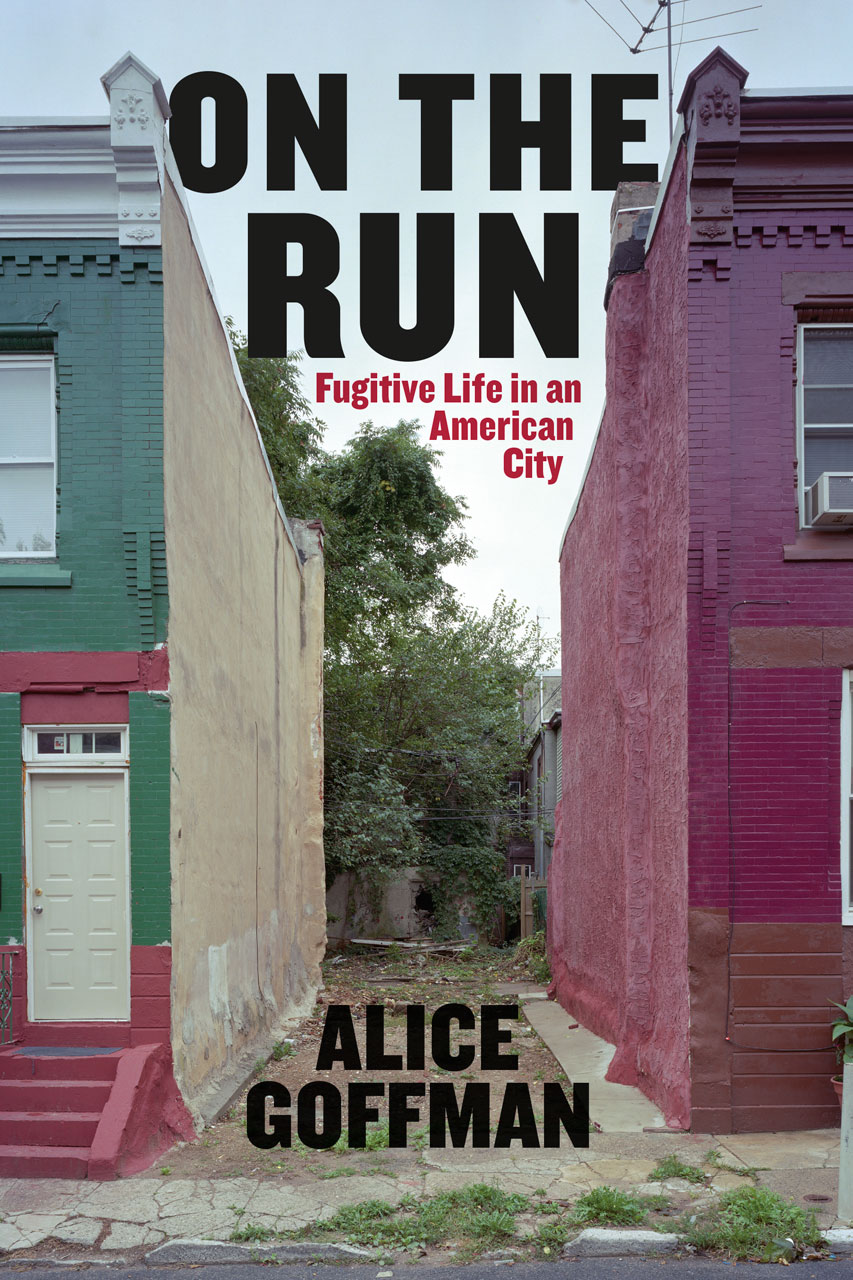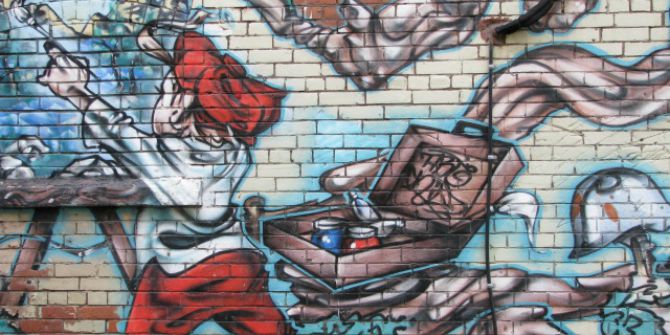Tim Newburn is impressed by Alice Goffman’s book On The Run: a look at the lives of the young African American men who are caught up in a web of warrants and surveillance in a neighbourhood in Philadelphia. As a work of ethnography it is outstanding. As a piece of social science it is refreshingly and gloriously readable –how often can one say that of sociology these days? And as an insight into the reach and effect of the contemporary penal state on the day-to-day lives of Black urban America it is unparalleled.
 On The Run: Fugitive Life in an American City. Alice Goffman. University of Chicago Press.
On The Run: Fugitive Life in an American City. Alice Goffman. University of Chicago Press.
There are currently 2.3 million people incarcerated in American prisons and jails. There are a further five million or more under some form of penal supervision – generally parole or probation. Such is the scale of imprisonment (America’s rate is close to five times that of England, and we are at record levels), and the disproportionate nature of its impact (one in 15 African-American males aged 18 or older is incarcerated compared with one in every 106 white males of the same age) that scholars have started to refer to what is occurring as mass incarceration. This unprecedented social ‘experiment’ has generated some wonderful, critical scholarship, most recently in the form of Michelle Alexander’s The New Jim Crow and Becky Pettit’s Invisible Men, both published in 2012.
Indeed, such has been the scale of academic work prompted by American penal expansion you might be forgiven for thinking that there was little new to say, and few new ways in which it might be explored. Any such concerns are however quickly dispelled by Alice Goffman’s extraordinary new book. On The Run is, by some distance, the most powerful work of ethnography that I have read for a very, very long time. The story of its genesis is almost as remarkable as the story at the heart of the book. But let’s leave that for now and begin with the substance of the book itself.
This is a study of some of the people – mainly the young men, but in important ways the women, old and young, too – in a small poor, Black neighbourhood in Philadelphia. Located close to the University of Pennsylvania, where Alice Goffman was an undergraduate when she began the fieldwork for this book, ‘6th Street’ is an area of about five blocks. Modestly prosperous in the 1950s and 1960s, by the early 2000s it had fallen on much harder times, though as Goffman says it was ‘not the poorest or the most dangerous neighbourhood in the large Black section of Philadelphia of which it is a part’. That said, given Philadelphia has a homicide rate over ten times that of London, this is hardly especially reassuring.
The core of Goffman’s ethnography revolves around a small number of young men – Chuck, Mike, Tim, Reggie, Alex and one or two others – and tells the story of their legal entanglements, their ‘wars’ with other young men from neighbouring territories, their attempts to lead some sort of life, to establish themselves as men and, more than anything else, to attempt the impossible task of avoiding the occupying force: the police. These are young men who have grown up knowing nothing else, for whom running from the cops is a set of skills that must be acquired very early on, and for whom a ‘straight’ life is so difficult to imagine it is rarely even a dream.
As Goffman acknowledges, the phrase ‘on the run’ only captures one half of these young men’s experiences. Yes, they are regularly seeking to avoid authority in almost all its forms, especially the police and the courts, and the strategies they use for keeping their heads down are described in detail. But the phrase ‘on the run’ is used interchangeably with the term ‘caught up’. For the other problem these young men face – and this is really the kernel of the Goffman’s thesis – is that once known to the system it is very difficult to escape. Arrested, charged and possibly imprisoned, certainly under penal supervision, these young men became, in Goffman’s terms, ‘legally compromised’. Their lives were now subject to a series of rules and regulations about where they could be seen, what they could do, and who they could be seen with. Any infraction – or, crucially, any alleged infraction – would likely mean an immediate return to prison or the escalation of punishment in some other form. It is this that so disfigures daily life for almost everyone in the neighbourhood (though Goffman has some occasional, powerful tales of those struggling to maintain their ‘straight’ lives. For Mike, Tim, Reggie and others (Chuck was shot and died), life is lived in the main without the basic accoutrements of citizenship. It is a life on the edge. It is a fragile life in which ‘freedom’ could come to an end at any time, and for almost any (or seemingly, no), reason.
In essence, this is a study of the extraordinary reach of the penal system – a reach that goes far beyond the simple impact of the formal systems of prison, probation, parole and even policing, to become something that influences and infects almost every aspect of a neighbourhood’s life. In short, in places like 6th street, the penal system has come to be, after the family perhaps, the institution that marks and moulds the lives of poor African-Americans in the 21st Century. The modern carceral state has turned neighbourhoods like this all over America into what Goffman calls ‘communities of suspects and fugitives’. Nowhere perhaps is this clearer than in the pressures placed on the women in these communities: on the one hand to protect or defend their men against police inquiries (to ‘ride’); and on the other to give them up to the police. In the latter regard there seemed almost no limit to which the police would not go to persuade, threaten, or blackmail the women into providing information about their husbands, partners, and sons. They were threatened with arrest, prosecution, imprisonment, or with the arrest of other family members if they didn’t co-operate, or they were threatened with having their jobs compromised or their benefits removed. Most dramatically, and by no means unusually, they were also threatened with having their children removed into care. That it is a precarious life for the men and for the women simply doesn’t do it justice.
As communities of suspects and fugitives these were neighbourhoods that were of course extraordinarily heavily policed. Ironically, they were simultaneously extremely under-protected. The legal entanglements surrounding so many neighbourhood residents mean that the police cannot easily, for which read pretty much ever, be contacted for ‘help’. As Goffman puts it, pithily, the ‘police are everywhere, but as guarantors of public safety, they are still out of reach’. The same can be said of other social institutions, for the potential presence of the police – on the lookout for ‘suspects’ – makes attendance at funerals, hospitals, even workplaces a dangerous activity for the legally compromised. In places like 6th Street an informal health care system has consequently come into being to provide a wide variety of services that some community members can no longer access via public health care. In one episode, one of the young men, Eddie, breaks his arm and Goffman’s description of the resetting of the damaged limb – in his mother’s kitchen – is an eye-watering illustration of the impact of being caught up/on the run.
Like all good ethnographies it is sometimes the small details – from the plates of corn bread and chicken offered in part-compensation to the local nurse who reset Eddie’s arm, to the almost throwaway manner in which Goffman reports witnessing the police strangle a young man to death – that sets it apart from other work. This, and the sheer scale of the enterprise, is what distinguishes On The Run. At the end of the book there is a 50-page ‘methodological note’ in which Goffman begins to reveal the extraordinary lengths she took to immerse herself in 6th Street. Beginning as an undergraduate student, rather serendipitously she began to tutor two children in the neighbourhood and gradually, by building friendships with Chuck, Mike and others, almost imperceptibly became part and parcel of 6th St life. Over the years so immersed did she become that she left behind much of her previous life and, indeed, much of her previous identity, and she talks movingly, if briefly, about the consequences of this.
Goffman’s approach – as an educated white woman attempting ethnography in a poor Black community – was to ‘take up as little social space’ as she could. This ‘invisibility’ translates into her writing. There were numerous occasions when I wanted to know more about her, to hear more about her thoughts and feelings, to feel the authorial presence more strongly. But this is not her style. In the methodological note, however, Goffman puts her head a little above the parapet, beginning for the first time explicitly to discuss the effort involved in the work, the risks and dangers she faced, and some of the ethical dilemmas involved. This ‘note’ is terrific, and as far from a dry methodological appendix as it is possible to imagine. Indeed, it ends on a note that is both hugely important and very shocking (deliberately so). I won’t spoil it by revealing what she says, and when you read the book you should wait until the end also.
This book is already making a significant name for itself – and deservedly so. The best part of a decade’s work has gone in to it, and the dedication of the ethnographer concerned goes beyond anything one could reasonably expect, or was probably sensible. In an age where ethics committees and the increasingly instrumental nature of academic life are making imaginative and risky work less and less possible, one can only be thankful that there are (very) occasional Alice Goffmans around to remind us just what can be achieved by sociology at its best. As a work of ethnography it is outstanding. As a piece of social science it is refreshingly and gloriously readable –how often can one say that of sociology these days? And as an insight into the reach and effect of the contemporary penal state on the day-to-day lives of Black urban America it is unparalleled.
—————————–
Tim Newburn is Professor of Criminology and Social Policy, London School of Economics. He is the author or editor of nearly 40 books, including: Policy Transfer and Criminal Justice (with Jones, Open University Press, 2007); and, Criminology (Routledge, 2012). He is currently writing an Official History of post-war criminal justice (with David Downes and Paul Rock) and, with the Guardian’s Paul Lewis, a book based on their joint project, Reading the Riots. He tweets at @TimNewburn. Read more reviews by Tim.








7 Comments